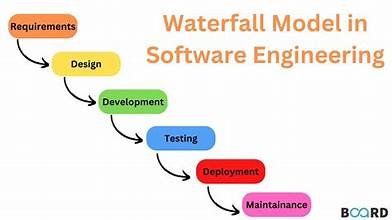The digital landscape is evolving faster than ever, and businesses are constantly looking for ways to stay ahead of the competition. One area experiencing a massive transformation is web development. With the rise of artificial intelligence (AI) and automation, the way websites are created, managed, and optimized is undergoing a significant shift. These technologies are not just making web development faster and more efficient; they are also opening new opportunities for creativity, personalization, and business growth.
So, what does the future hold for AI and automation in web development? Let’s explore the upcoming changes and how they are shaping the industry.
1. AI-Powered Design and Prototyping
Traditionally, designing a website required countless hours of brainstorming, sketching, and prototyping. Now, AI tools can automatically generate layouts, color schemes, and design elements based on user preferences and business goals. This revolutionizes the design phase of web development, making it quicker and more intuitive. For example, AI-driven platforms can suggest ready-to-use templates or even design custom prototypes tailored to a brand’s identity.
2. Smarter Code Generation
For developers, writing long lines of code has always been at the core of web development. AI-powered coding assistants are now helping automate this process by suggesting code snippets, fixing bugs, and even generating complete sections of code. This not only saves time but also reduces human error, ensuring cleaner and more efficient development. In the future, businesses can expect AI to handle routine coding tasks while developers focus on more complex, creative problem-solving.
3. Enhanced Personalization
Personalized user experiences are becoming the gold standard for online platforms. AI and automation are transforming web development by enabling websites to analyze user behavior in real time and adapt accordingly. Imagine a website that changes its content, product recommendations, or layout based on the preferences of each visitor. This kind of AI-driven personalization keeps users engaged, improves customer satisfaction, and increases conversion rates.
4. Automated Testing and Debugging
Testing is a crucial step in web development to ensure a website runs smoothly across devices and browsers. Manual testing is time-consuming, but AI-powered automation tools can now test multiple aspects of a website simultaneously, including functionality, performance, and security. These tools also detect bugs faster and suggest fixes, significantly reducing the time between development and deployment.
5. Chatbots and Virtual Assistants
AI-driven chatbots are no longer just a trend; they’re becoming an essential part of web development. Businesses are integrating intelligent chatbots into their websites to provide real-time customer support, answer FAQs, and even guide users through the sales funnel. Virtual assistants, powered by AI, can also help developers by managing tasks, scheduling, and monitoring website performance.
6. Voice Search and Conversational Interfaces
With the rise of smart speakers and voice-activated devices, voice search is becoming a key factor in web development. AI enables websites to recognize and process voice commands, making navigation easier and faster for users. Future websites will increasingly adopt conversational interfaces, where users can interact with websites in a more natural, human-like manner.
7. Advanced Data Analytics
Data-driven decision-making is at the heart of modern web development. AI and automation tools are capable of analyzing massive amounts of data, from user behavior to website traffic patterns. These insights help businesses optimize their websites for better engagement and conversions. Developers can also use predictive analytics to forecast user needs and build websites that are more proactive than reactive.
8. Increased Efficiency and Cost Savings
One of the biggest advantages of AI and automation in web development is efficiency. Tasks that once required days or weeks can now be completed in hours. By reducing the workload on developers, businesses save money while still achieving high-quality results. This democratizes web development, making professional websites more accessible to small and medium-sized businesses.
9. Security Improvements
Cybersecurity remains a major concern for businesses. AI-powered security systems in web development can detect unusual patterns, block threats, and respond to cyberattacks in real time. Automation ensures that websites are regularly monitored and updated with the latest security patches, minimizing risks for both businesses and their customers.
10. The Human Touch Will Still Matter
Despite the rise of AI and automation, human creativity and innovation will remain vital in web development. While AI can handle repetitive tasks and provide recommendations, developers and designers will continue to bring unique perspectives, creative solutions, and emotional intelligence to projects. The future of web development will be a blend of machine efficiency and human ingenuity.
Final Thoughts
AI and automation are no longer just futuristic concepts; they are actively reshaping web development today. From design and coding to personalization and security, these technologies are revolutionizing how websites are created and managed. For businesses, this means faster, smarter, and more cost-effective solutions. For developers, it opens up new opportunities to innovate and push creative boundaries.
The future of web development lies in collaboration between humans and machines. By embracing AI and automation, businesses can ensure their websites remain competitive, user-friendly, and ready to meet the demands of the digital future.

